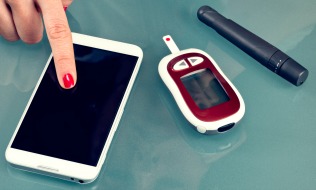

Since diabetes is a progressive disease, it’s important to get treatment in the middle, according to Dr. Thomas Ransom, endocrinologist at the Nova Scotia Health Authority, during Benefits Canada‘s 2019 Halifax Benefits Summit on Sept. 24.
If diabetes is under-treated, blood sugars go up and stick to things — eyes, kidneys, nerves, feet, he said. And if it’s over-treated, blood sugars go down — the brain doesn’t receive glucose and patients can experience decreased levels of consciousness, seizures or worse.
“My take on diabetes is that the body’s starving among plenty. In order to survive and function, cells need glucose. Insulin is the gatekeeper here. If you don’t have insulin, the sugar stays out in the blood. The levels go high, but the cells starve.”
Read: The impact of hypoglycemia on workplace absenteeism
Typically, patients with diabetes are on multiple daily insulin injection therapy, meaning there’s a basal insulin they take twice a day to manage what the liver is doing and meal-time insulin to manage their meals.
It isn’t easy, said Dr. Ransom, noting people on multiple daily insulin injection therapy are managing and making decisions several times a day. “At work, this can lead to absenteeism and presenteeism. It’s not entirely just about the complication. It’s also about getting lows, managing days off, etc. All this takes up time.”
Hypoglycemia, also known as low blood sugar, is a big culprit when it comes to disrupted productivity in the workplace, he added. Individuals can miss hours of work following a hypoglycemic episode and there’s quite a bit of lag time even once they’ve recovered.
“There’s a cost to this if employees aren’t productive. People are justifiably anxious about hypoglycemia. It’s anxiety-provoking. It’s on their mind. It’s a big distraction. It’s costly and risky. Not just for the patient, but for the people around them if they have a low, too.”
Read: How employers can support staff with diabetes-related hypoglycemia
When a patient checks their blood sugar via the finger prick method, they just receive a number, meaning they’re unaware which direction their sugar is going, said Dr. Ransom. This will cause a patient to make a decision that puts them in a risky situation, he added, noting how most individuals err on the conservative side at work. “They’ll let their sugars run high, so they don’t go low, but then they get long-term consequences because of this.”
A lot happens to blood glucose in between finger pricks — and this is information that people with diabetes generally don’t have, he said. However, flash glucose monitoring technology consists of a small sensor implanted in the arm, which automatically measures and stores glucose readings day and night. Patients can read their glucose levels by waving a device over the sensor. The technology provides information about whether sugars are going up or down, and stores eight hours of data.
“After a while, patients gain an appreciation of what’s happening with their diabetes, so they can be more confident in their decision-making. FGM is easy for patients to use. It provides the potential for a safer, more productive workplace with better glycemic control.”
Read more stories from the 2019 Halifax Benefits Summit.
